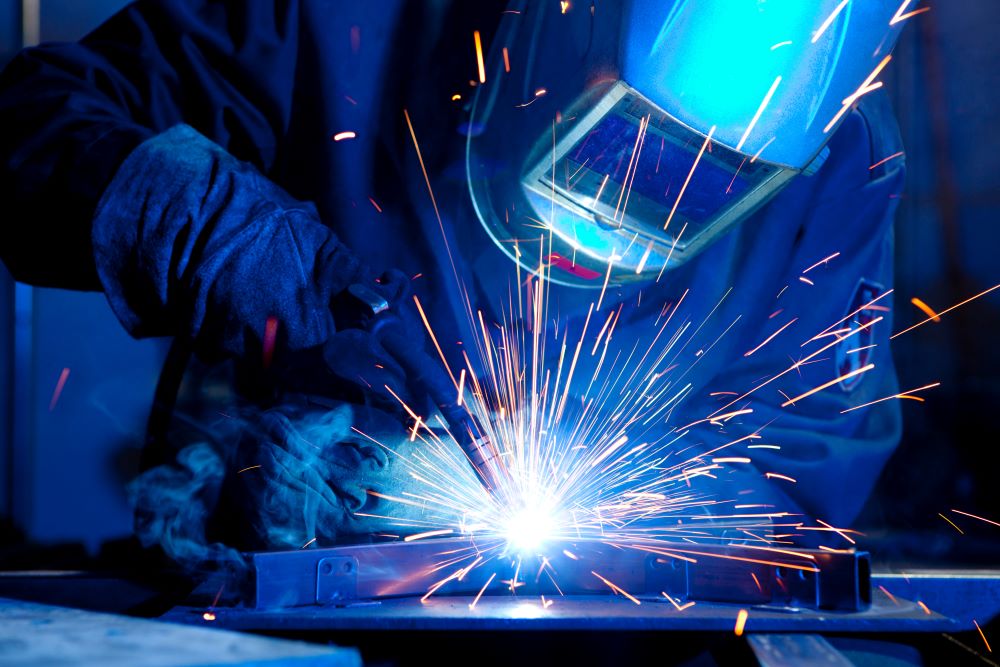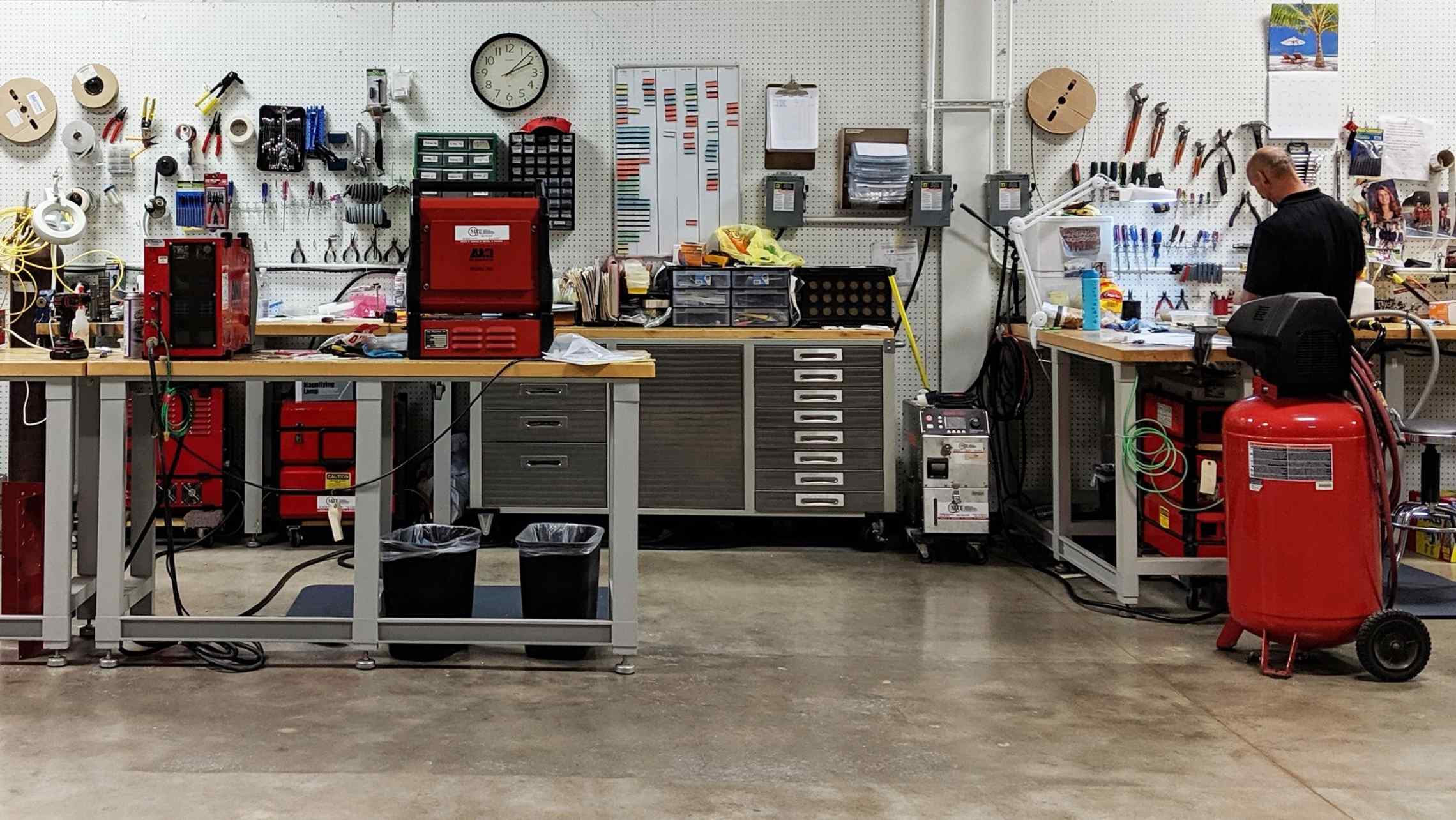Everything about Welding: Key Insights Into Techniques and Best Practices for Success
Welding incorporates a variety of strategies, each fit for details materials and applications. Recognizing these approaches, such as GMAW, SMAW, and TIG, is necessary for achieving excellent results. Furthermore, the ideal devices and safety methods can not be ignored. As prep work and troubleshooting play important roles in the welding process, mastering these aspects can greatly enhance the high quality of the end product. What are the crucial factors that ensure a successful weld?
Understanding Various Welding Strategies
Welding strategies incorporate a selection of methods, each suited to certain applications and materials. Among one of the most common strategies are Gas Metal Arc Welding (GMAW), Protected Metal Arc Welding (SMAW), and Tungsten Inert Gas Welding (TIG) GMAW, likewise referred to as MIG welding, is prominent for its speed and versatility, making it perfect for thin materials. SMAW, or stick welding, is favored for its simpleness and performance in exterior settings, especially with thicker metals. TIG welding supplies accuracy and control, making it ideal for complex job and non-ferrous metals (Belgrade Welding). Each technique has its unique advantages and factors to consider, permitting welders to pick the most effective method based upon the job's needs, material kind, and wanted end results. Comprehending these techniques is vital for successful welding
Vital Welding Devices and Devices
While various welding strategies need particular skills, the best tools and devices are just as essential for accomplishing high quality results. Vital welding devices consists of welding makers, which differ relying on the method-- such as MIG, TIG, or stick welding. Safety equipment, including headgears, handwear covers, and aprons, assurances safety and convenience throughout the process. Additionally, clamps and components assist secure materials in location, guaranteeing precision in welds. Consumables like welding poles, cable, and shielding gas are likewise crucial parts that influence the quality of the weld. Tools such as cutters and mills facilitate surface prep work and post-weld finishing, contributing to a specialist outcome. Buying high-quality tools inevitably enhances the effectiveness and efficiency of welding tasks.
Safety Practices in Welding
Correct safety practices are necessary in the welding industry to safeguard employees from possible risks. Welders have to wear appropriate personal safety tools (PPE), including safety helmets with appropriate shading, gloves, and flame-resistant garments. Ample air flow is vital to decrease direct exposure to hazardous fumes and gases produced during the welding procedure. In addition, workers need to be trained in the correct handling of welding devices to protect against accidents. Fire safety measures, such as keeping flammable materials far from the welding location and having fire extinguishers easily available, are required. Normal examinations of tools and workspaces can aid recognize prospective risks prior to they lead to crashes. By sticking to these security methods, welders can create a safer working environment and lessen dangers associated with their profession.
Readying Materials for Welding
Preparing materials for welding is an important action that substantially affects the high quality and stability of the last item (Montana Mobile Welding and Repair Fabrication). Appropriate prep work includes cleansing the surfaces to eliminate contaminants such as dirt, rust, and oil, which can endanger the weld. Methods such as grinding, sanding, or using solvents are generally utilized to accomplish a clean surface. In addition, guaranteeing that the products fit together comfortably is necessary; gaps can cause weak welds. It's also read more essential to take right into account the alignment and positioning of the components, as this will certainly influence the simplicity of welding and the final outcome. Ultimately, picking the ideal filler material and guaranteeing compatibility with the base metals is necessary for achieving solid, long lasting welds
Tips for Achieving High-Quality Welds
Attaining top notch welds calls for focus to information and adherence to ideal practices throughout the welding procedure. Correct joint prep work is crucial, guaranteeing surfaces are tidy and totally free from contaminants. Selecting the suitable filler material and welding strategy based on the base steels is critical for ideal bonding. Preserving regular traveling rate and angle while welding can promote and avoid defects uniformity. In addition, regulating warm input is vital; excessive warm can lead to warping and damaged joints. Routinely checking the welds during the procedure permits immediate changes if essential. Employing proper post-weld therapies, such as cleaning and anxiety alleviation, can boost the durability and honesty of the weld, ultimately guaranteeing an effective end result.
Troubleshooting Common Welding Issues
Welding typically provides challenges that can influence the quality and integrity of the last product. Usual problems such as porosity, irregular weld beads, and getting too hot can occur, each requiring particular repairing techniques. Comprehending these problems is crucial for welders to enhance their abilities and achieve perfect results.
Porosity Troubles Explained
Porosity can usually be forgotten, it continues to be a crucial issue in welding that can endanger the stability of an ended up product. Porosity refers to the existence of small gas pockets within the weld bead, which can lead and damage the joint to premature failing. This problem generally occurs from contaminants, dampness, or inappropriate protecting gas protection throughout the welding procedure. To minimize porosity, welders should validate that the base materials are dry and clean, utilize suitable shielding gases, and maintain regular welding criteria. Routinely evaluating the equipment and environment can additionally assist determine prospective problems before they materialize in the weld. Addressing porosity effectively is important for achieving solid, sturdy welds that fulfill high quality standards.

Inconsistent Weld Beans
Irregular weld grains can considerably affect the top quality and strength of an ended up product. Various elements add to this problem, including inappropriate traveling speed, inaccurate amperage settings, and irregular electrode angles. When the welder moves as well swiftly, a grain might appear narrow and do not have infiltration, while relocating too gradually can create excessive accumulation. Furthermore, making use of the wrong amperage can result in either undercutting or excessive spatter, both of which compromise weld stability. The welder's method, such as inconsistent torch motion, can also lead to uneven bead appearance. To mitigate these troubles, welders should concentrate on keeping consistent, controlled movements and ensuring correct tools setups to attain uniformity in their welds. Consistency is vital to attaining reputable and strong welds.
Getting Too Hot and Bending Issues
Too much heat throughout the welding process can cause considerable overheating and deforming concerns, influencing the architectural integrity of the work surface. These issues usually show up as distortion, which can compromise placement and fit-up, making more setting up challenging. Elements adding to overheating consist of the choice of welding specifications, such as voltage and take a trip speed, as well as the type of material being welded. To alleviate these problems, welders must preserve constant traveling rate and ideal heat input while monitoring the workpiece temperature. Additionally, preheating or post-weld heat treatment can assist reduce anxieties triggered by rapid air conditioning - Belgrade. Regular evaluation and adherence to ideal techniques are important in stopping getting too hot and ensuring the longevity and reliability of welded structures
Frequently Asked Questions
What Are the Occupation Opportunities in the Welding Industry?
The welding sector provides diverse career opportunities, including positions as welders, assessors, designers, and instructors. Specialists can work in manufacturing, construction, aerospace, and vehicle sectors, gaining from strong need and competitive wages in various duties.
How Can I Enhance My Welding Rate Without Compromising High Quality?
To enhance welding speed without compromising top quality, one must practice effective methods, preserve devices, maximize setups, and enhance hand-eye coordination. Routine training and seeking feedback can also greatly add to achieving much faster, premium welds.
What Accreditations Are Readily Available for Welders?
Countless qualifications exist for welders, consisting of those from the American Welding Society (AWS), the National Facility for Building And Construction Education And Learning and Research (NCCER), and different industry-specific organizations. These credentials enhance employability and show ability proficiency.
How Does Welding Influence the Residences of Metals?
Welding affects the homes of metals by altering their microstructure, which can result in adjustments in toughness, hardness, and ductility. Warmth input and cooling rates during the procedure greatly influence these product qualities.
Can I Weld Dissimilar Metals Together?
